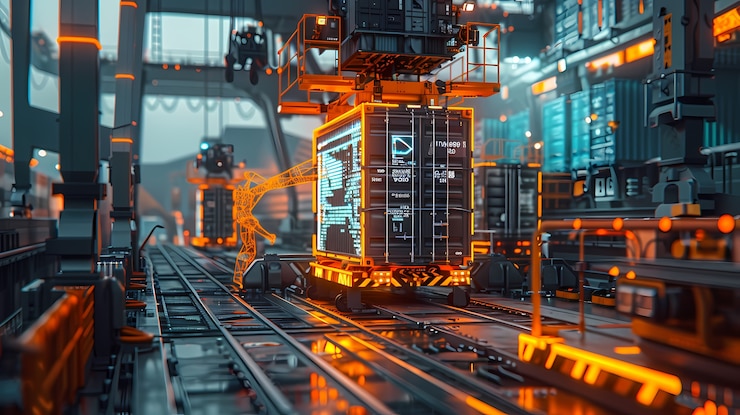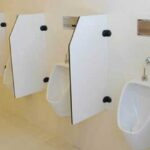In the high-stakes world of sheet metal fabrication, staying ahead means adopting technologies that deliver superior speed, accuracy, sustainability, and cost-efficiency. As we progress through 2025, one standout innovation leading this transformation is the Electric CNC Panel Bender. This advanced panel bending machine offers substantial benefits over traditional hydraulic systems and manual processes—helping businesses remain agile, competitive, and future-ready.
Whether you’re fabricating metal enclosures, doors, HVAC panels, or automotive components, integrating an electric CNC panel bender into your workflow can be a game-changer. In this blog, we explore how this technology is reshaping the fabrication landscape and why it’s a must-have asset for manufacturers aiming to thrive in the years ahead.
Understanding Electric CNC Panel Bending Technology
Before diving into the competitive advantages, let’s clarify what an electric CNC panel bender actually is.
What Is a Panel Bender?
A panel bender is a type of panel bending machine designed for forming complex bends in sheet metal parts. Unlike press brakes, which press the sheet against a die, panel benders use a series of programmable tools that fold the material around a set axis. This method is ideal for producing parts with multiple bends and high dimensional accuracy.
What Makes It “Electric”?
Traditional panel benders typically rely on hydraulics for movement and force. An electric CNC panel bender, however, uses servo-electric motors instead. This switch to electric actuation delivers greater control, consistency, and energy efficiency—while eliminating the maintenance issues associated with hydraulic systems.
Key Benefits That Drive Competitiveness
1. Unmatched Precision and Repeatability
In an industry where tolerances are tighter than ever, electric CNC panel benders offer superior accuracy through servo-driven control systems. The motors deliver consistent force and movement on every cycle, ensuring that each part produced is virtually identical.
Why it matters: Consistency reduces scrap, rework, and quality control issues—making your process more efficient and your products more reliable.
“Precision isn’t just about perfection. It’s about profitability.”
2. Faster Production Cycles
Electric panel benders often outperform their hydraulic counterparts in cycle times. Electric drives accelerate and decelerate more quickly, and many machines allow for simultaneous axis movements—cutting down on overall bending time per part.
Why it matters: Faster production means shorter lead times, more throughput, and a greater capacity to take on high-volume orders without compromising quality.
3. Reduced Operating Costs
Switching to an electric CNC panel bender can significantly lower your cost per part. Here’s how:
-
Lower energy consumption: Servo-electric systems consume energy only when in motion—unlike hydraulic systems that run continuously.
-
Less maintenance: No hydraulic oil to replace or leak checks to perform.
-
Minimal tool wear: Advanced automation and gentle handling reduce wear and extend tool life.
Why it matters: Reduced energy and maintenance costs improve your bottom line, and over time, these savings can make a big impact on profitability.
4. Flexibility and Quick Changeovers
Electric panel benders are designed for fast, tool-free changeovers. With automated tool positioning, dynamic clamping systems, and intelligent part programming, operators can switch between jobs in minutes rather than hours.
Why it matters: In 2025, customization is king. Whether you’re producing 10 parts or 10,000, flexibility allows you to respond to client needs faster—and with less downtime.
5. Improved Operator Ergonomics and Safety
Traditional press brakes and hydraulic benders can be physically demanding and prone to injury risks. Electric CNC panel benders reduce manual handling through automation, ergonomic design, and built-in safety systems.
Why it matters: Safer, more comfortable work environments improve productivity, reduce labor turnover, and make your company more attractive to skilled workers.
6. Data Integration and Industry 4.0 Readiness
Modern electric panel benders come equipped with advanced CNC controls and IoT connectivity. They can be integrated into MES/ERP systems, enabling real-time monitoring, predictive maintenance, and remote diagnostics.
Why it matters: Digital integration helps you optimize production, make data-driven decisions, and align with smart manufacturing trends that are defining competitiveness in 2025 and beyond.
Use Case Examples
Automotive Components
OEM and Tier 1 suppliers benefit from the precision and speed of electric panel benders when fabricating structural parts, brackets, and enclosures with high repeatability.
HVAC Panels and Enclosures
With an ever-growing demand for climate control systems, HVAC manufacturers rely on the flexibility and quick changeover features of electric CNC benders to handle diverse panel configurations efficiently.
Electrical Cabinet Manufacturing
Complex parts with multiple bends and tight tolerances—common in control panels and electrical enclosures—are perfectly suited to the advanced forming capabilities of electric panel bending machines.
Sustainability as a Competitive Edge
Sustainability is no longer optional—it’s a competitive differentiator. Electric CNC panel benders support your green manufacturing initiatives in several key ways:
-
Energy efficiency reduces your carbon footprint.
-
Cleaner operations with no hydraulic fluid mean a safer workplace and easier compliance.
-
Lower material waste from precision forming helps you meet environmental goals.
Why it matters: Clients, regulators, and partners increasingly value sustainability—and many make procurement decisions based on it.
Staying Ahead: Questions to Ask Before You Invest
If you’re considering adding an electric CNC panel bender to your lineup, ask yourself:
-
What part volumes and types am I producing?
-
Do I need faster changeovers or lights-out production?
-
How much downtime am I currently experiencing due to maintenance?
-
Am I aligned with Industry 4.0 practices?
-
What are my long-term cost-saving goals?
Taking the time to assess your shop’s current performance against the capabilities of modern panel bending machines will clarify the ROI and guide your investment decision.
Final Thoughts
The metal fabrication landscape is evolving rapidly—and those who fail to innovate risk falling behind. An electric CNC panel bender is more than just another piece of equipment; it’s a strategic asset that enhances productivity, reduces costs, improves safety, and positions your company at the forefront of technological advancement.
If you’re aiming to stay competitive in 2025 and beyond, upgrading to an electric CNC panel bending machine isn’t just a smart move—it’s an essential one.



